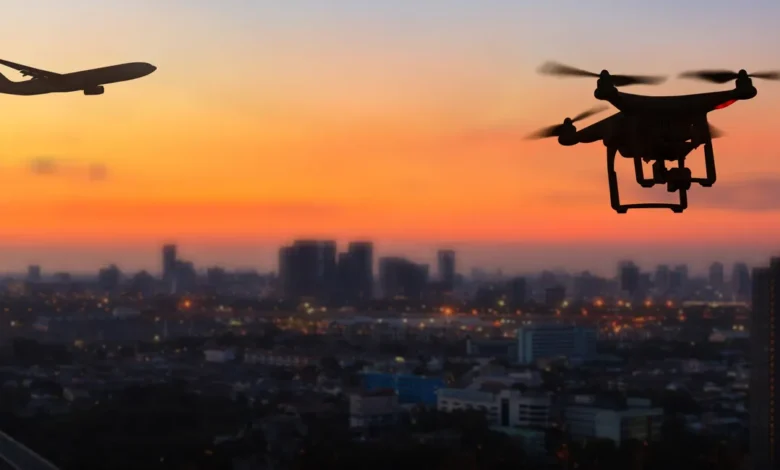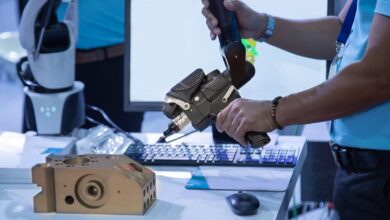Sonoran Desert Institute Highlights the Growing Threat of Drone Disruptions to Commercial Airlines

As drones become more accessible and widely used, the risk of near misses in controlled airspace has become a growing concern for commercial airline pilots and airport operators. Sonoran Desert Institute (SDI), accredited by the Distance Education Accrediting Commission (DEAC), offers comprehensive online coursework in uncrewed technology, equipping students with knowledge in drone operations, safety protocols and regulatory compliance. They are increasingly posing a consistent challenge for aviation professionals responsible for keeping passengers and crews safe.
This rise in drone-related incidents underscores the urgent need for coordinated efforts between regulators, aviation professionals and technology developers. Effective solutions require not only enhanced technical safeguards but also comprehensive training, and clear policies that balance innovation with safety. By encouraging collaboration across sectors, the aviation community can better address the complexities of integrating drones into shared airspace.
Rising Reports, Real Impacts
The number of drone sightings reported by pilots has increased significantly over the past decade. The Federal Aviation Administration (FAA) has received thousands of reports from various sources, highlighting the growing concern over unauthorized drone operations near airports. These reports often involve drones flying at unauthorized altitudes or within restricted zones, with some as close as a few hundred feet from commercial jets during takeoff or landing.
While most of these encounters end without damage, they carry significant implications for the environment. A split-second decision by a pilot reacting to a drone could alter flight paths, delay schedules or compromise onboard safety.
The FAA has responded by issuing Temporary Flight Restrictions (TFRs) and publishing guidelines for drone operators. Enforcement remains a challenge. Identifying and tracking drone users in violation of rules is complex, especially in crowded urban environments. This regulatory gap leaves the airline industry in a vulnerable position, managing the consequences, without full control over the situation.
Pilots on Alert
Commercial airline pilots already manage high-pressure conditions, and drone sightings add another layer of uncertainty to an already demanding job. During critical phases of flight, takeoff, approach and landing, the margin for error is thin. A drone in the vicinity introduces an unpredictable variable that demands quick judgment, without full situational context.
Given the rising number of drone sightings, pilots are incorporating potential drone encounters into their threat assessments, especially during critical flight phases such as takeoff and landing. While training and simulators can help prepare crews for many contingencies, drones present a unique challenge due to their small size, inconsistent behavior and limited radar visibility. As these near misses become more common, pilot advocacy groups are calling for more robust detection systems, as well as better coordination between air traffic control and local authorities.
Airport Protocols Under Pressure
Airports are also adapting their safety protocols in response to this growing issue. To reduce risks, some airports have begun using drone detection tools like radio frequency scanners and thermal imaging systems to spot unauthorized devices in restricted areas. However, these technologies are not yet standard at all major airports, and their effectiveness can vary.
In certain cases, drone sightings have prompted temporary closures of runways, or even full ground stops. These disruptions have cascading effects, leading to delays, missed connections and financial losses for airlines. Airport operators are increasingly forced to balance the financial impact of potential shutdowns with the cost of implementing early detection and response systems. As drone-related risks rise, so does the urgency to take action.
Enforcement and Accountability
Enforcing drone regulations in proximity to airports remains a complex task. Identifying and locating unauthorized drone operators is often challenging, prompting coordinated efforts between federal and local authorities. While the FAA maintains authority over airspace, local law enforcement is often tasked with identifying and apprehending offenders. The challenge lies in the fleeting nature of most incidents. By the time a drone is spotted and reported, the operator is often long gone.
Penalties for unauthorized drone operations near airports include fines and criminal charges, but its ability to discourage misuse is still minimal. Without effective tracking mechanisms, many violations go unpunished. There is a growing consensus that a coordinated enforcement strategy involving both federal agencies and local jurisdictions is necessary to address this issue.
SDI highlights that technical training, policy understanding and situational awareness are essential components of effective drone operation and airspace management. Institutions involved in aviation education and drone technology must equip professionals with both practical and legal frameworks to avoid conflict and ensure safety.
Public Awareness and Responsibility
Part of the answer is raising public awareness. Many drone users are hobbyists who may be unfamiliar with the rules that apply to their flights. Clear outreach about no-fly zones, altitude limits and responsible flying can help prevent unintentional violations. When local governments, aviation organizations and community groups lead educational efforts, they help build a culture of informed and responsible drone use.
Incorporating geofencing technology into consumer drones is another preventative measure. This software-based solution restricts devices from operating in sensitive areas, like airports. While not foolproof, geofencing provides a layer of automated compliance that can reduce human error. Manufacturers are beginning to recognize the value of these features and may face greater pressure to adopt them, universally.
Industry Collaboration and Data Sharing
The aviation industry has traditionally operated with a high level of collaboration. In the case of drone disruptions, airlines, airports and federal agencies must continue to share data and intelligence. Near-miss reports, sensor data and enforcement outcomes can be analyzed to identify patterns and improve future responses.
Airline associations are calling for centralized reporting systems that make it easier for pilots to document drone encounters in real-time. This information can help authorities identify repeat offenders or vulnerable airspace corridors. Improved communication between stakeholders leads to better preparedness and a faster response to incidents.
A Shared Responsibility
While drones offer immense value across industries, from photography to infrastructure inspection, their safe integration into airspace depends on cooperation. The burden should not fall solely on pilots or airport operators. Manufacturers, regulators, hobbyists and commercial drone companies all have a role in preserving safety.
Aviation is built on layers of redundancy, precision and accountability. The increasing presence of drones in shared airspace must adhere to these same standards. Creating consistent expectations and consequences across the board can reduce the risk of future disruptions.
The commercial airline industry is not resisting change. It is asking for a system that respects both innovation and safety, one where the skies are accessible, but not compromised. By bringing all stakeholders to the table, it’s possible to create a safer environment that supports both traditional aviation and emerging technologies.




